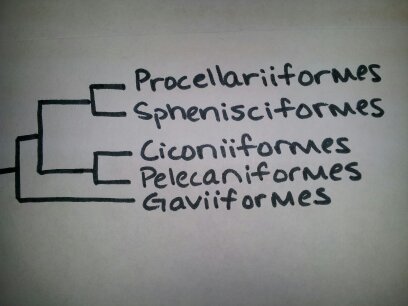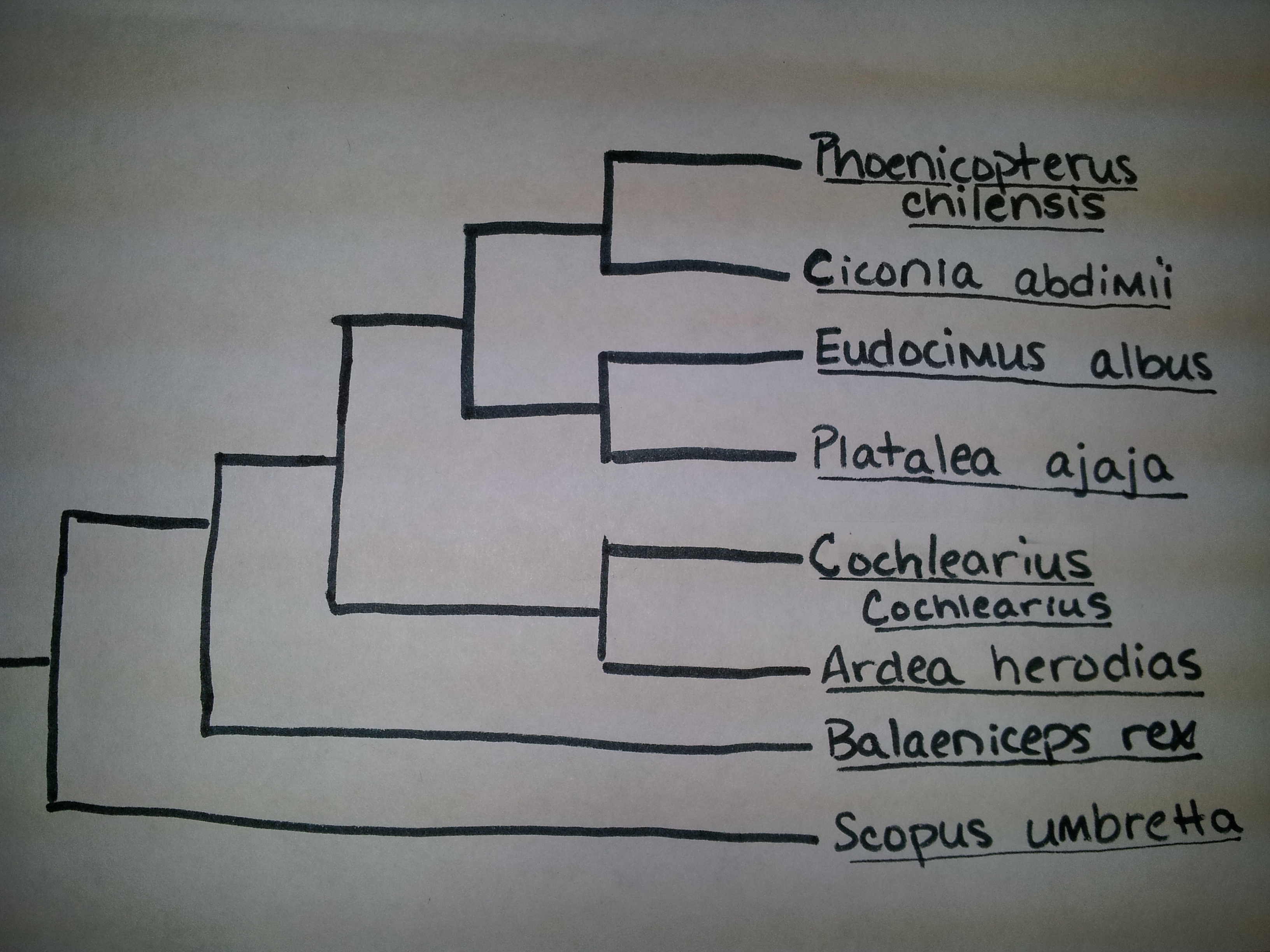Classification
- Domain: Eukarya
- Kingdom: Animalia
- Phylum: Chordata
- Class: Aves
- Order: Ciconiiformes
- Family: Balaenicipitidae
- Genus: Balaeniceps
- Species: Balaeniceps rex
The Shoebill Stork is first of all in the domain Eukarya because it is a multicellular organism in which the cells have a membrane-bound nucleus and organelles. Next it is placed into the kingdom Animalia because it is again multicellular and also heterotrophic. It is in the phylum Chordata because it is has an internal spinal cord. Furthermore, it is a part of the class Aves because its anatomy and physiology show that it is a bird like the Mallard Duck (for example, it has hollow bones and feathers). According to Gerald Mayr, a paleornithologist from Germany, there have been some debates over which order to put it in. Originally it was put in the order Ciconiiformes because it is a long-legged water bird. However, some scientists argue that it should be placed with the Pelecaniformes because its DNA and structure is similar to members in that order (Mayr 2003). The Shoebill Stork is in the family Balaenicipitidae because of its whale-shaped head. The genus is Balaeniceps also because it has a whale-shaped head. Finally, the full species name is Balaeniceps rex; which by using Donald Borrer's Latin and Greek root dictionary, literally translates to "whale-headed king" in English (Borrer 1960).
 The
picture at left shows the five orders in the class Aves. The
Balaeniceps rex is in the order Ciconiiformes, which you
can see is a sister taxa to the Pelecaniformes. These are the
two orders that scientists are debating which to correctly put
the Shoebill into (Kahl 1972).
The
picture at left shows the five orders in the class Aves. The
Balaeniceps rex is in the order Ciconiiformes, which you
can see is a sister taxa to the Pelecaniformes. These are the
two orders that scientists are debating which to correctly put
the Shoebill into (Kahl 1972).
 This
picture on the right shows multiple species in that are similar
to the Balaeniceps rex. These are all birds in the
order Pelecaniformes. Some scientists think that this should be
the correct phylogeny of the Shoebill rather than putting it
with the Ciconiiformes (Smith 2010).
This
picture on the right shows multiple species in that are similar
to the Balaeniceps rex. These are all birds in the
order Pelecaniformes. Some scientists think that this should be
the correct phylogeny of the Shoebill rather than putting it
with the Ciconiiformes (Smith 2010).
Now follow this link to find out more about the Habitat of the Balaeniceps rex!